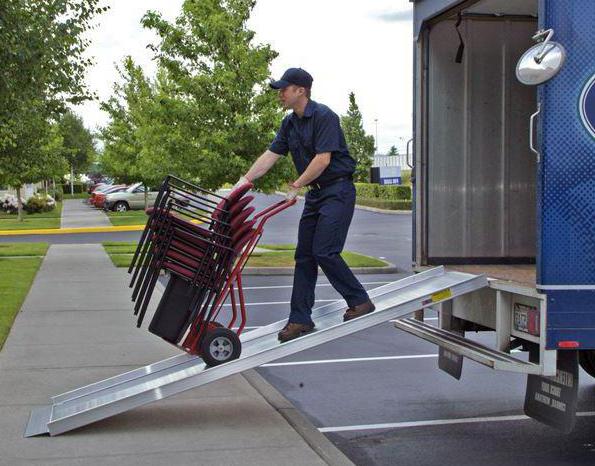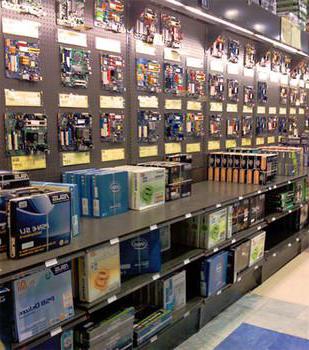The activities of trading enterprises are significantly different from those that produce goods or provide services. One of the features can be called the fact that marketing in trade is almost of the utmost importance. Indeed, to get a good income, it’s not enough just to offer customers a quality product. In the conditions of high competition between sellers and increasing consumer demands, the success and even survival of many trading enterprises directly depend on the correct supply of goods, the organization of high-quality service for customers and wide advertising.
The essence of the trade process
After the product was conceived by the inventor, drawn by the designer, developed by the technologist and released by the factory or enterprise, only the seller (usually several intermediary sellers) separates it from the final consumer.

The set of actions that an entrepreneur performs in order to transport a product to a store, put it on a display window, pack it, sell it to the buyer, is the commercial and technological process. In fact, this is the last stage of product distribution, since then the goods are used for their intended purpose, and not resold.
Ways to organize the sales process
Considering trading companies that sell non-grocery goods, there are three schemes that are used most often:
- The first scheme: the commercial and technological process in the store does without a storage stage. After receiving the goods, they are immediately transferred to the employees of the trading floor. The implementation of this scheme is possible if the product has packaging equipment (boxes, packaging, bags, trays). The use of this method of organizing the trading process is possible if there are two functional rooms in the store: in one of them there is acceptance, in the other - sale. True, many small private stores completely cost only a trading floor, accepting goods and immediately displaying them in shop windows and counters.
- The second scheme already includes three stages of the process: acceptance, storage and sale. Large stores and chains of trade enterprises equip their facilities with warehouses, the size and equipment of which depends on the scale of trading and the specifics of the goods. Small businesses may resort to storing goods in the main room (in boxes, packaging, or otherwise).
- The organization of the trade and technological process according to the third scheme is the most time-consuming and costly, since there is another stage: pre-sale preparation. Often it consists in unpacking the goods, cleaning them, steaming or ironing.

For such manipulations, as a rule, a separate room is also allocated. Many non-food stores use all of the above schemes.
Warehouse logistics: storage features of non-food products
As a rule, goods such as shoes, clothes, household chemicals, electrical appliances and other non-food products do not last long in storehouses, that is, such inventories are updated quite quickly.

Warehouse logistics is a part of economic science that deals with the study and optimization of the process of supply, storage and shipment of goods. In accordance with the logistic rules, non-food products should be placed in storage areas so that possible losses are minimal.
The trade and technological process may be accompanied by the following types of losses:
- Actual (battle, scrap, spoilage of products).
- Natural decline in goods.
Some categories of products may change their weight or consumer qualities in a natural way, that is, as a result of leakage or desiccation. The logistician takes into account the permissible standards developed for each individual product.
The second type of loss is called actable, since the fact of a battle, scrap or damage necessarily compiles a corresponding act. The cause of such unpleasant situations is the mismanagement of storage technology and careless handling of goods.
Trade and technological process: the importance of competent placement of goods on the trading floor
Speaking about the correct location of the products being sold on the store’s commercial equipment, they mean not only accuracy and aesthetics, but also compliance with some specific requirements:
- The trading floor should be completely filled with goods, that is, you should not allow the presence of empty shelves and display cases.
- Products of related groups and categories should be placed nearby (for example, brushes, laces and shoe care products).
- The place of related products is right next to the main ones.

- Bulky products are best placed closer to the exit.
- The display of goods to which the seller would like to draw the most attention of buyers (new items) should be performed in the most prominent places.
- To stimulate the sale of goods of reduced demand, they are placed close to the most popular products.
Sale of goods to customers
The trade and technological process in the store ends with the most important stage - the sale of goods. All the previous actions of the employees of the trading company do not make sense if the product does not reach the final buyer, because it is during the sale process that the store receives financial resources.
Based on this, it is not surprising that so much attention is paid to marketing (the art of effective sales). Everything is important here: the design and layout of the goods, the atmosphere in the trading floor, the level of service, the system of bonuses and discounts, as well as many other factors.
The sales process is based on the main and auxiliary constituent elements. The first (main) are in the offer of goods, advising customers, conducting operations on the release of the product and settlement and cash operations. The process of acceptance of goods, their placement and styling are considered auxiliary elements. The second category should also include internal transportation of goods, their preparation for sale, cleaning and preparatory work on the trading floor.
Success Factors
Well-organized trade and technological processes in a trading company can significantly affect the sales volume and their quality. In order to optimize these processes, store managers resort to the following measures:
- Examine consumer demand.
- Draw up applications for deliveries and form the necessary assortment.
- Select or train staff.
- Organize promotions and events.
An important role in the process of successful sales is played by the correct and convenient storage of products. This becomes crucial when a retailer relies on self-service.

Visitors to such stores should have access to all the products they are interested in. Convenient baskets and carts for folding products, comfortable fitting rooms, an understandable and simple layout system (in size, color, name), as well as many other nuances help to increase and maintain their loyalty to the company.
In some cases, it makes sense to provide additional services that will distinguish the store from competitors and increase efficiency: accept pre-orders, complete sets of related or gift items,Cut fabrics in a manner convenient for customers.
The elements of the sale phase
The implementation of sales (exchange of goods for money) becomes the culmination of the entire trading process. To understand which actions increase the quantity and quality of sales, and which, conversely, scare away customers, you should study all operations that are directly related to customer service:
- Meeting buyers.
- Method of product offer.
- The process of selecting a product by a buyer.
- Transferring money for a purchase.
- After-sale customer assistance.
Retail Features
The seller’s face is the first thing a visitor sees. From the words of greeting he said and how correctly the employee understands the needs of the buyer, the probability of making a sale largely depends. Demonstration of products that may be of interest to the client and the process of choosing the right product are under the control of the seller.

Based on clarifying questions, he forms for himself a picture of the needs of the buyer and narrows the scope of the search. In the process of selecting goods, it becomes the seller’s responsibility to provide complete information about the merchandising and aesthetic properties of the products, as well as the quality, composition and principle of operation of the products.
Successful completion of the transaction is considered most likely when the seller provides the client with a choice of several products (no more than five) that satisfy the client's requests. Having decided on the choice, the buyer is escorted to the settlement node, where the quality, performance and packaging of the purchase are checked.
Warranty Compliance
Warranty documentation, which is mandatory upon the release of technically complex goods, is issued upon payment.
The merchant and its employees are responsible for following this procedure. It includes the following actions:
- Marking in the factory passport (date, seller’s signature, store stamp).
- Check for operating instructions.
- Registration of a sales receipt, which is handed to the client.
Structuring products, informing customers
The trade and technological process becomes most effective when using the advertising design of stores. Various types of signs and signs inside the trading floor greatly simplify, accelerate and facilitate customer service. The information posted on them may indicate the general name of the group of goods, as well as more detailed details: size, price, manufacturer, discounts and promotions.

A manifestation of concern for the needs of customers is the hanging of look-up tables with useful data (how much fabric is needed to sew products for a person with a certain height and size, what outerwear should be purchased for a child of a particular age, and the conformity of domestic and foreign shoe sizes).
As a rule, the architectural features of retail premises and buildings, the interior, as well as the design features of commercial equipment are used to place such elements.
The role of the leader in the trading process
The management of the trade and technological process is carried out by the store owner, his authorized representative or manager. The main tasks that are solved by employees holding managerial positions relate to the efficient use of all enterprise resources, optimization of trading processes, cost reduction and increased profits.
As in many other areas, responsible and competent managers with strategic thinking and motivating employees are extremely important in the trade in non-food products.








